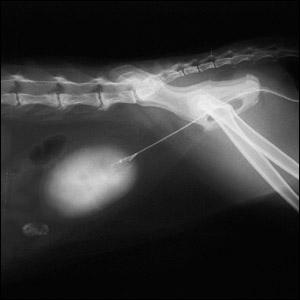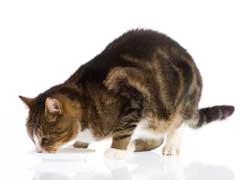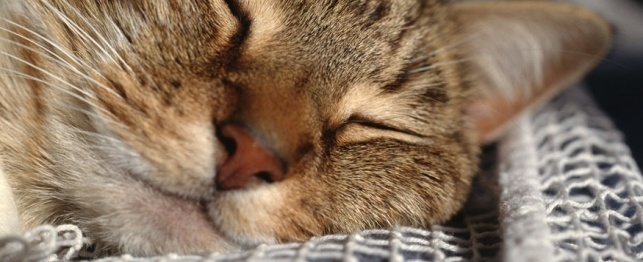
Cats
Any decrease in an cat's ability to bear weight on a limb(s) or a decrease in the normal mobility and function of a limb(s) can be considered to be a lameness. Lameness can be extremely subtle or profound, affecting one limb or several limbs. It can be intermittent or constant, worse in the morning, worse at night, worse after rest, worse after or during exercise. Many cat owners refer to lameness as "limping".
There is no breed, age or sex predeliction for lameness in cats. Lameness may be associated with a traumatic event, such as being hit by a car, or it may develop gradually, as in a bone tumor in an affected leg. The underlying cause of a lameness may be life threatening or it may be detrimental to a good quality of life such as debilitating and painful arthritis.
Following a surgical procedure you will need to enforce a period of rest and restriction. This may not prove too difficult at first; however, in the case of many healing fractures, it will need to last at least six weeks, and your pet may not want to be restricted.
Some lameness problems may be treated with a cast, splint or soft-padded bandage. This will need to be kept clean and dry and, where appropriate, the toes at the bottom of the bandage should be checked daily for swelling, sweating or pain.
Follow your veterinarian's instructions carefully with regard to medications such as antibiotics or anti-inflammatory drugs, and there may be a need for follow-up x-rays or a follow-up visit with your vet. If the lameness is resolving, gradually re-introduce exercise over a period of several weeks.
Lameness problems arise during normal everyday activity. Severe injuries such as falling from a height or being hit by a car can be avoided by keeping your cat indoors.
 Cat Fleas on Humans – How To Avoid Getting Bitten?
Cats m
Cat Fleas on Humans – How To Avoid Getting Bitten?
Cats m
 Benadryl For Cats
Benadryl For Cats Benadryl (active ingredient diphenhydramin
Benadryl For Cats
Benadryl For Cats Benadryl (active ingredient diphenhydramin
 Dysuria (Trouble Urinating) in Cats
Dysuria (Trouble Urinating) in Cats
Dysuria (Trouble Urinating) in Cats
Dysuria (Trouble Urinating) in Cats
 Feline Renal Failure Diet – What To Feed To My Cat?
What i
Feline Renal Failure Diet – What To Feed To My Cat?
What i
 Top 20 Cat Symptoms That Send Them to the Vet
Top 20 Cat Symptoms That Send Them to the Vet
Top 20 Cat Symptoms That Send Them to the Vet
Top 20 Cat Symptoms That Send Them to the Vet
Copyright © 2005-2016 Pet Information All Rights Reserved
Contact us: www162date@outlook.com